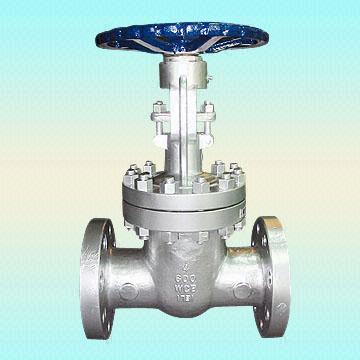Advantages & disadvantages of gate valve butterfly valve ball valve
Posted: 05/11/2020 12:53:07 Hits: 371
1. Gate valve:
A gate valve refers to a valve in which the closing member (gate) moves along the vertical direction of the channel axis. The gate valve is mainly used to cut off the medium on the pipeline, that is, fully open or fully closed. Generally, a gate valve cannot be used to regulate the flow. It can be applied to low temperature and low pressure or high temperature and high pressure, depending on the material of the valve. It can be applied to low temperature and low pressure or high temperature and high pressure, depending on the material of the valve. But gate valves are generally not used in pipelines that transport mud and other media.

Advantages:
① Low fluid resistance;
② The torque required for opening and closing is small;
③ can be used in annular pipeline network where the medium flows in two directions, that is to say, the flow direction of the medium is not restricted;
④ When fully open, the erosion of the sealing surface of a gate valve by the working medium is smaller than that of a globe valve;
⑤ The shape structure is relatively simple, and the manufacturing process is good;
⑥ The structure length is relatively short.
Disadvantages:
① The external dimensions and opening height are large, and the required installation space is also large;
② During the opening and closing process, the sealing surface is relatively rubbed, and the friction loss is large, even at high temperature, it is easy to cause scratches;
③ General gate valves have two sealing surfaces, which add some difficulties in processing, grinding and maintenance;
④ Long opening and closing time.
2. Butterfly valve:
A butterfly valve is a valve that uses a disc-type opening and closing member to reciprocate around 90 ° to open, close, and adjust the fluid channel.
Advantages:
① Simple structure, small size, light weight, and material saving;
② Quick opening and closing, small flow resistance;
③ It can be used for medium with suspended solid particles, and it can also be used for powder and granular media according to the strength of the sealing surface. It can be used for bidirectional opening and closing and adjustment of ventilation and dust removal pipelines, and is widely used in gas pipelines and water channels in metallurgy, light industry, electric power, and petrochemical systems.
Disadvantages:
① The flow adjustment range is not large, when the degree of opening reaches 30%, the flow will enter more than 95%;
② Due to the limitation of butterfly valve structure and sealing material, it is not suitable for high temperature and high pressure pipeline system. The general working temperature is below 300 ℃ and below PN40;
③ The sealing performance is poor compared to ball valves and globe valves, so it is used in places where the sealing requirements are not very high.
3. Ball valve:
It is evolved from the plug valve. Its opening and closing part is a ball. The ball is rotated 90 ° around the axis of the valve stem to achieve the opening and closing. The ball valve is mainly used to cut off, distribute and change the direction of medium flow on the pipeline. A ball valve designed with a V-shaped opening also has a good flow adjustment function.
Advantages:
1. Has the lowest flow resistance (actually 0);
2. Because it won't get stuck during work (when there is no lubricant), it can be reliably used in corrosive media and low-boiling liquid;
3. In a large pressure and temperature range, complete sealing can be achieved;
4. Quick opening and closing can be achieved. The opening and closing time of some structures is only 0.05 ~ 0.1s to ensure that it can be used in the automatic system of the test bed. When the valve is opened or closed quickly, there is no impact;
5. The spherical closure member can be automatically positioned at the boundary position;
6. The working medium is reliably sealed on both sides;
7. When fully open and fully closed, the sealing surfaces of the ball and the valve seat are isolated from the medium, so the medium passing through the valve at high speed will not cause corrosion of the sealing surface;
8. Compact structure and light weight, it can be considered as the most reasonable valve structure for low temperature medium system;
9. The valve body is symmetrical, especially the welded valve body structure, can well bear the stress from the pipeline;
10. The closing member can withstand the high pressure difference during closing.
11. A ball valve with fully welded body can be buried directly underground, so that the internal parts of the valve are not eroded, and the maximum service life can reach 30 years. It is the most ideal valve for oil and natural gas pipelines.
Disadvantages:
① Because the main seat sealing material of ball valve is PTFE, it is inert to almost all chemical substances, and has a small friction coefficient, stable performance, not easy to age, wide temperature range and excellent sealing performance. However, PTFE has physical characteristics like high expansion coefficient, sensitivity to cold flow and poor thermal conductivity, which require that the design of the valve seat seal must be carried out around these characteristics. Therefore, when the sealing material becomes hard, the reliability of the seal is destroyed. Moreover, PTFE has a low temperature resistance level and can only be used at less than 180 ° C. Above this temperature, the sealing material will age. When considering long-term use, it is generally only used at temperatures below 120 ° C.
② Its regulating performance is worse than that of a globe valve, especially pneumatic operated valve (or electric operated valve).
